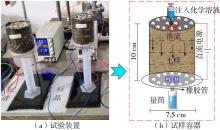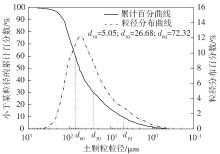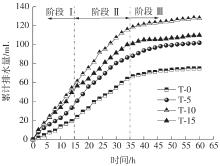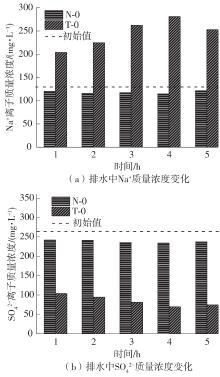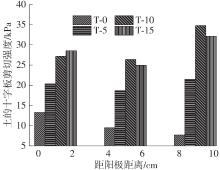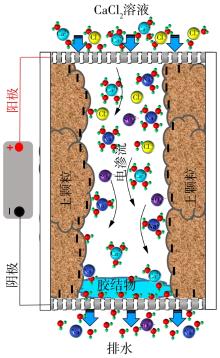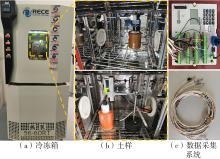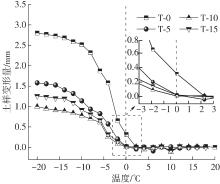华南理工大学学报(自然科学版) ›› 2023, Vol. 51 ›› Issue (4): 53-60.doi: 10.12141/j.issn.1000-565X.220359
所属专题: 2023年土木建筑工程
电渗-氯化钙对硫酸钠盐渍土变形的影响
张恒1,2,3,4 黄俊光4 李伟科4 李健斌4
- 1.华南理工大学 土木与交通学院,广东 广州 510640
2.广州建筑股份有限公司,广东 广州 510030
3.广州市建筑集团有限公司,广东 广州 510030
4.广州市设计院集团有限公司,广东 广州 510620
Influence of Electroosmosis-Calcium Chloride Treatment on the Deformation of Sodium Sulfate Saline Soil
ZHANG Heng1,2,3,4 HUANG Junguang4 LI Weike4 LI Jianbin4
- 1.School of Civil Engineering and Transportation,South China University of Technology,Guangzhou 510640,Guangdong,China
2.Guangzhou Municipal Construction Co. ,Ltd. ,Guangzhou 510030,Guangdong,China
3.Guangzhou Construction Group Co. ,Ltd. ,Guangzhou 510030,Guangdong,China
4.Guangzhou Design Institute Group Co. ,LTD,Guangzhou 510620,Guangdong,China
摘要:
过多的水盐含量是季冻区盐渍土产生变形的根本原因,而电渗可以通过驱动盐离子加速土体的排水固结,同时也会导致阴极土体含水率过大,进而产生严重冻胀变形。本文采用自制装置进行电渗联合氯化钙的室内试验,研究不同氯化钙含量(质量分数为0、5%、10%、15%的氯化钙溶液)对硫酸钠盐渍土变形的影响,结果表明:电渗联合氯化钙可以增大硫酸钠盐渍土的电导率,进而加速土中水的排出,相较于仅电渗处理,土体最终电渗排水量增加35%以上;硫酸钠盐渍土中过量的Na+和SO42-在电场力的驱动下分别向阴阳两极迁移,大部分随电渗水流排出,从而降低土体中含盐量,减小低温下土体冻胀盐胀变形;在电场力作用下,Ca2+迁移到阴极并与水解产生的OH-结合形成Ca(OH)2胶结物,大大增强土颗粒间的粘结力,而多余的Ca2+与可溶性硅酸盐发生反应形成水合硅酸钙(C-S-H),并沉积在土颗粒表面,增加土颗粒间的摩擦力,有效降低阴极土体的冻胀变形;经电渗-氯化钙处理后的硫酸钠盐渍土,微观结构更加密实,抵抗冻胀盐胀变形能力显著增强,其中以质量分数10%的氯化钙溶液的加固效果为最佳,相较于仅作电渗处理土体,最终排水量提高了近70%,阴极土体抗剪强度增大了27.1 kPa,冻胀变形量降低了65.1%,而当试验用氯化钙溶液中氯化钙质量分数超过10%后,由于渗流通道的淤堵和电极腐蚀,导致最终排水量和土体抗剪强度有所降低,土体变形量增大。
中图分类号:
